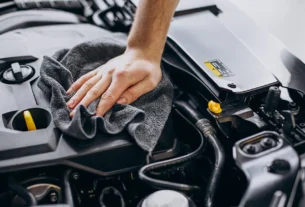Taking a Viper to the track is pure adrenaline—but it’s also hard on consumables. Sticky tires heat-cycle out, brake components wear fast, and fluids need more frequent service under race conditions. If you plan to run HPDEs or open lapping days, the smartest move is to model those expenses into your financing plan from day one. Here are eight strategies to keep lap days thrilling and your budget steady.
1. Build a “track consumables rate” and add it to your monthly
Start with realistic numbers per track day: a Viper on R-compounds can burn through a significant portion of a tire set in 1–2 events, and front pads/rotors can wear quickly on brake-intensive circuits. Estimate cost-per-day for tires, brakes, and fluids, then divide by how many events you’ll run per year. Convert that to a monthly figure and treat it like part of your car payment. This turns unpredictable spikes into a smooth, planned cash flow.
2. Separate street and track wheels to control tire spent
Two sets of wheels—street and track—can extend the life of your daily tires and ensure you’re not heat-cycling expensive road rubber on track. Price out a dedicated track wheel/tire package during your purchase planning. If you’re finalizing financing, keep a cash reserve or parallel budget line for that package rather than stretching your primary note; it gives you flexibility to replace only the items you burn without touching your core terms.
3. Choose pads, rotors, and fluid with predictable wear—and price them now
Braking is a Viper’s lifeline. Pick a track-capable pad compound known for consistent wear, pair it with rotors that aren’t notorious for cracking, and commit to a high-temp fluid with regular flush intervals. Get real quotes for a full pad/rotor/fluid cycle and schedule those cycles according to your event calendar. Add a small monthly “brake fund” to your budget so you’re never tempted to limp worn hardware through another session.
4. Align your finance term to service intervals
If you plan 6–8 events a year, you’ll likely schedule fluid flushes every season, pads every 2–4 events (depending on compound and driving), and tires at a cadence that matches your aggression and track surfaces. Choose a term that leaves room in your monthly for these intervals. Longer terms can lower the payment and free cash for consumables; just make sure there’s no prepayment penalty so you can accelerate principal when your track calendar lightens up.
5. Create a maintenance “sinking fund” instead of over-funding the down payment
Putting too much cash down can leave you short when the track season hits. Consider a balanced down payment, then park the difference in a high-yield savings bucket earmarked for track costs. Automate a monthly transfer equal to your estimated consumables rate. This approach prevents credit-card scrambles after a corded tire or fluid boil forces an early service.
6. Budget for inspections, setup, and alignment like consumables
A track-focused alignment (more negative camber, appropriate toe) improves tire life and feel but should be checked periodically. Likewise, pre- and post-event inspections catch small problems before they become big bills. Price these services now and include them in your monthly plan. If you ever need corner balancing or minor cooling/ducting tweaks, you’ll already have the buffer.
7. Plan for “oops” events and insure accordingly
Track day insurance isn’t free, but it can cap worst-case risk. Set aside a small monthly contingency for higher-than-expected wear or an off-track excursion that chews up a tire and alignment. If you decide to carry event insurance, price an annual or per-day policy and roll a proportional amount into your monthly motorsport budget. Knowing your downside is covered helps you say “yes” to events without financial anxiety.
8. Use flexible structures and keep liquidity for race days
When comparing lenders, favor structures with no early payoff penalty and the ability to make principal-only payments. That way, in months with fewer events, you can accelerate equity; in heavy track months, you can redirect cash to consumables without stress. Keep a small emergency line (or cash cushion) specifically for track weekends—fuel, transponder fees, extra pads, or a last-minute tire swap are much easier to handle when you’ve planned for them.
Putting It All Together (A Sample Blueprint)
- Define your season: events per year × (tires + pads/rotors + fluids + alignment/inspections + insurance).
- Convert that annual total into a monthly number and treat it as part of ownership cost.
- Choose a finance term that leaves breathing room, prioritize no-penalty prepayment, and avoid over-funding your down payment to preserve a maintenance reserve.
- Set up two bank buckets: “Car Payment” and “Track Fund.” Automate both.
- Keep meticulous records (service logs, pad/rotor swaps, alignments). Good documentation supports resale and helps forecast future budgets.
Track time in a Viper is some of the most rewarding seat time you can buy—if your financial plan matches the machine’s appetite for consumables. Budget deliberately, stay proactive with inspections and fluid cycles, and use financing flexibility to protect your cash flow during peak season. With a disciplined approach to Dodge Viper finance, you’ll roll into every grid spot confident that the only thing you’re burning through is rubber—on your terms, and on schedule.




